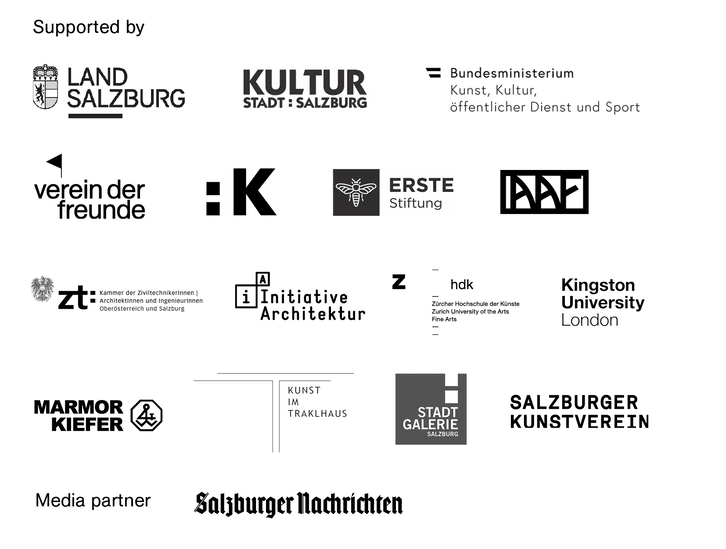| Shop |
- Academy
- Studies
- Courses
- – Courses 2024
- – All courses
- – Painting
- – Drawing
- – Printmaking
- – Photography / Film / Video
- – Sculpture
- – Installation
- – Performance
- – Architecture
- – Art Critique / Writing
- – Curating
- – Course archive 2023
- – Course archive 2022
- – Course archive 2021
- – Course archive 2020
- – Course archive 2019
- – Course archive 2018
- – Courses until 2017
- Events
- Blog/Videos
- Press
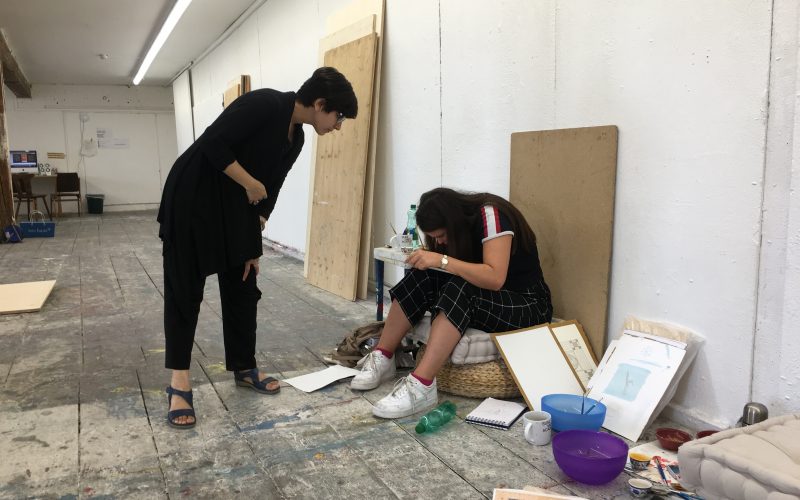
Reviving Miniature Painting
A basic understanding of drawing and the ability to work sitting on cushions on the floor are the only requirements of Imren Qureshi’s class. Eleven course participants—only one or two of which come from a painting background—have spent the past two weeks sequestered in a long, narrow and bright room under the roof of the medieval castle in which the Summer Academy takes place. They lean against the white walls, perched on rattan ottomans and grey cushions; balance plywood “easels” on their laps, and with necks craned, diligently put brush to paper.
The use of archival materials is the main emphasis of miniature painting, I’m told. The work is done using solely natural tools and handmade. Students prepared their own heavy-grammage wasli by binding four layers of pure cotton paper with an organic glue. The paper is then smoothed using the curve of a giant cowrie, “otherwise the fibres of the paper would catch the brush and break the stroke.” This creates an absorbent, durable material onto which hand-made pigment, shallow pools of which sit in mussel shells, is applied using a qalam or squirrel-hair brush. “Using shells to hold the pigment attracts less dust than say, plastic would. The shape also prevents damage to the brushes.”
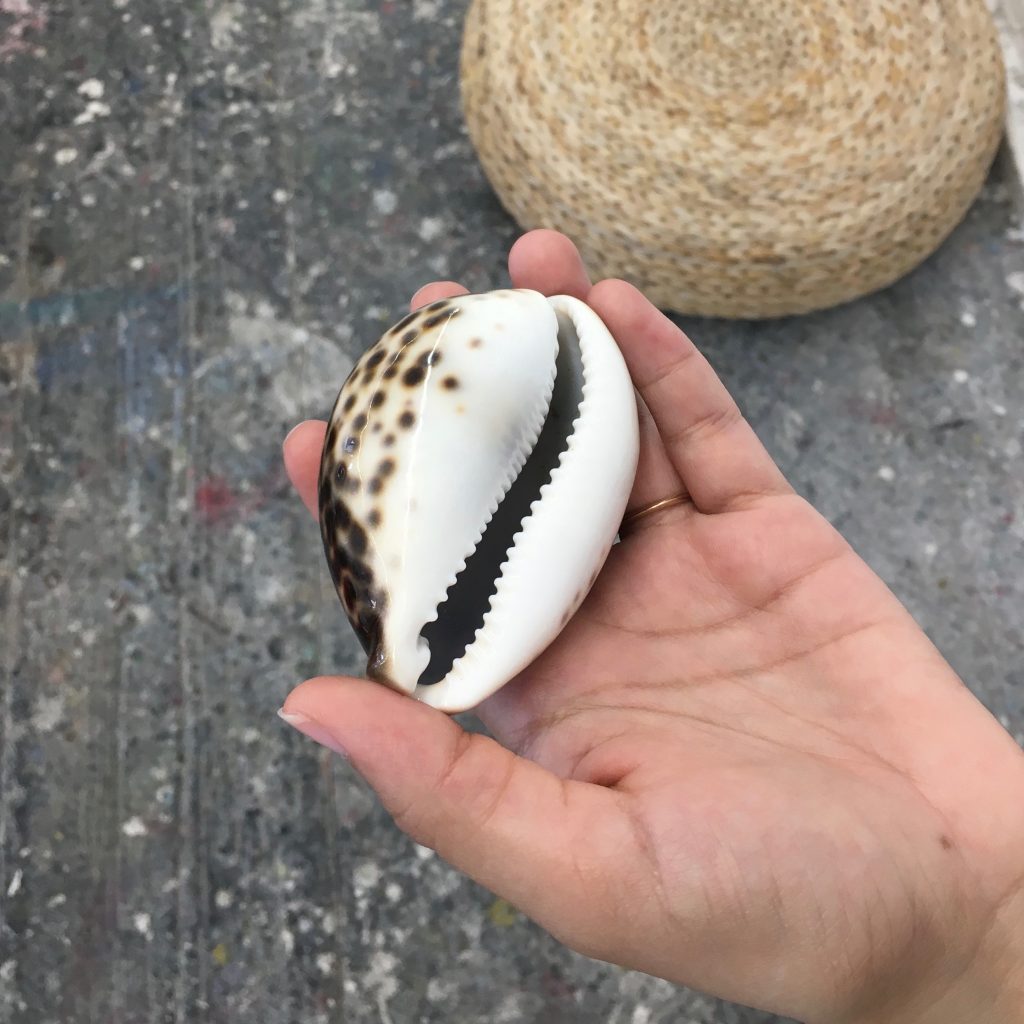
Zahra holding a cowrie
The process of brush-making too takes great patience and skill: “We did all of this in Lahore, before we came over here.” explained Hadia Zahra, co-teacher of the course. “We offer Kit-Kats, or tomatoes, or nuts to the squirrels, and when they come for their treats, we hold onto them using gloves. When they’re busy eating, we dampen the hair towards the beginning of the tail, and give it a little trim…When you dampen the hair, it forms a natural brush-like shape. Because squirrels knock their tails when running around, you then have to sift through for split ends, or broken hair, and remove them. We then tie the softest hairs together, using the plasticky end of fallen pigeon feathers to make the ferrule. It’s then attached to a piece of bamboo using tape.”
It takes “intense practice” to successfully use a tool as particular as this. The miniature painting tradition is an exercise in patience. “When you apply the first layer [of pigment], you can’t even see it. You start to see the image at around sixty or seventy layers. The colour is really diluted, so you have to gradually build up the image, because if you were to suddenly use a dark colour, it would bleed and the colour won’t graft into the sheet.” The steady hands of students coming from archeological, architectural and medical backgrounds will only aid them so much when using the qalam. “You really need to exercise your breathing while you’re working, because if you breathe too hard, you can get a thicker line. Or a patchy colour. We’re aiming for a powdery, dusty finish to our paintings. If you look at the initial practices, then at their work now, there’s been immense improvement, especially in the line quality. It’s the literal synchronisation of hand and mind and breath.” Zahra explained.
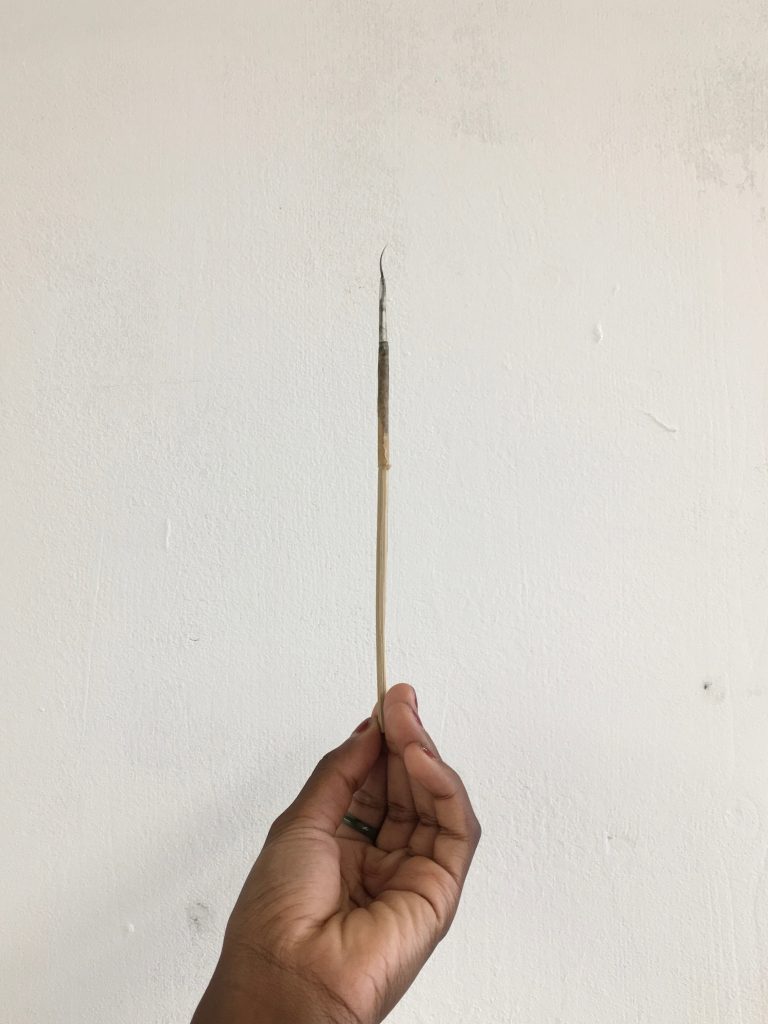
The qalam (squirrel-hair brush)
Sitting next to bright windows, using magnifying eye-glasses, the students work on the paintings they plan to exhibit during tomorrow’s open studio. “Miniature painters had their practices reduced to small workshops or private businesses” in the wake of colonialism, I’m told. It was only in 1982 that the National College of Arts in Lahore, Pakistan began offering a bachelor’s degree dedicated to the revival of the technique—the only course of its kind offered globally. Since its inception, “…people like Imren [Qureshi] among others began reapplying the technique to contemporary work. People were able to express more contemporary ideas, making it very important and accessible.”
“The entire technique surrounding miniature painting is very conceptual.” Zahra explains. One aim of the time spent in Salzburg has been the teaching of how to reappropriate the ethos of the painting technique in contemporary work. “[The students] aren’t trying to capture a physical reality, rather the essence or personality of that object.” she continued. Sherry Chu-Rudolf paints a self-portrait. Washed in blue, she gazes over her right shoulder at a hovering dragonfly, “SUMMERACADEMY.AT” mug in hand. Her image, rendered with the unmistakable use of isometric perspective and flat-look stylisation so typical of contemporary miniature painting, will be shown alongside landscapes, more traditional portraits, and one student’s study wave and water practice, a painstaking line study.
The work of Imren Qureshi and Hadia Zahra’s students is a fine example of intercultural exchange, and how through the post-colonial revival of such a specialised mode of creating art, we can re-access a fundamental element of Pakistani art history, on a hilltop in Austria, with a modern gaze.
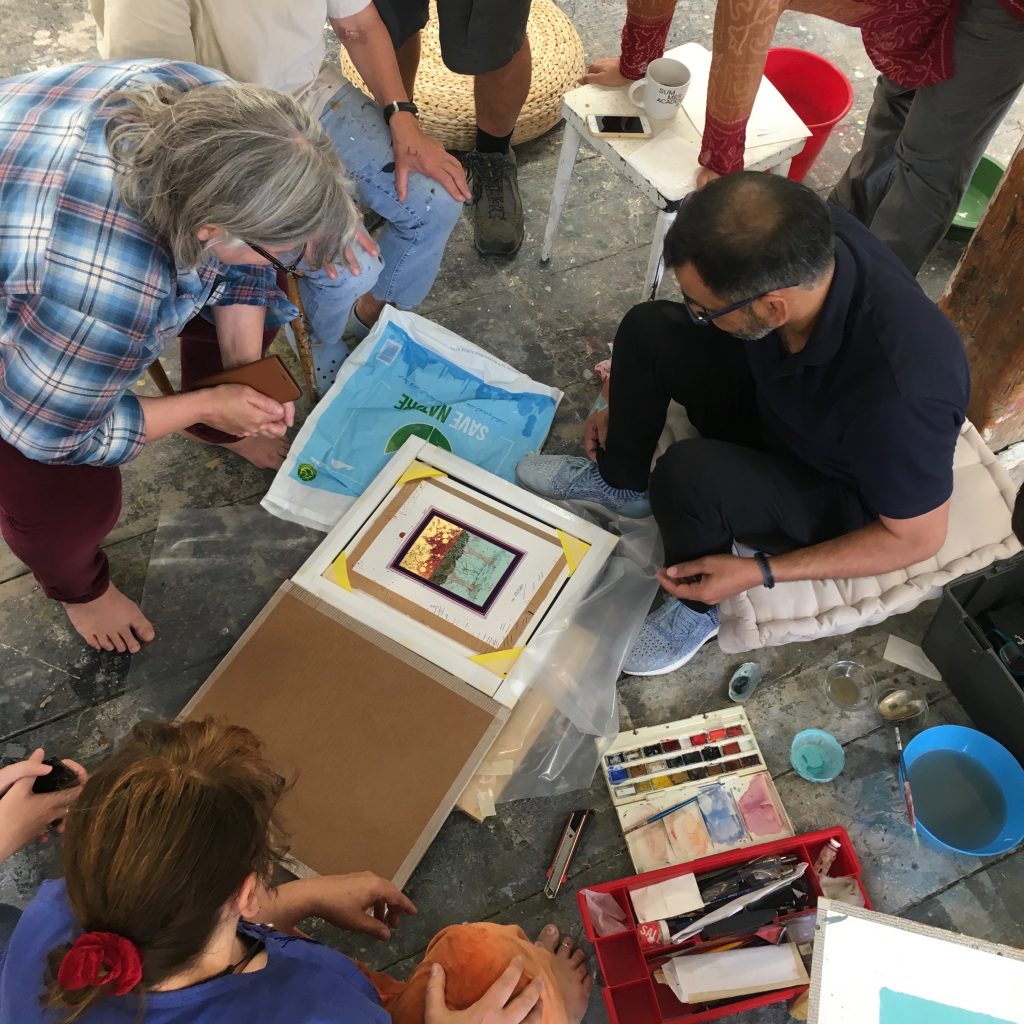
Qureshi leads students in a demonstration
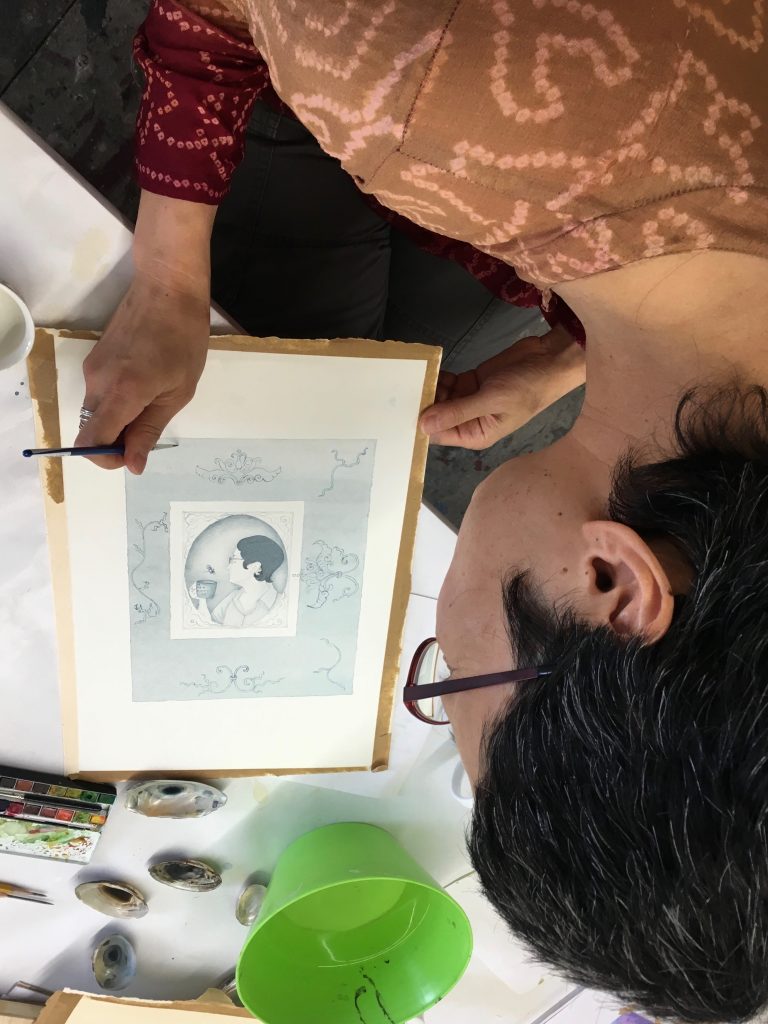
Chu-Rudolf’s miniature portrait
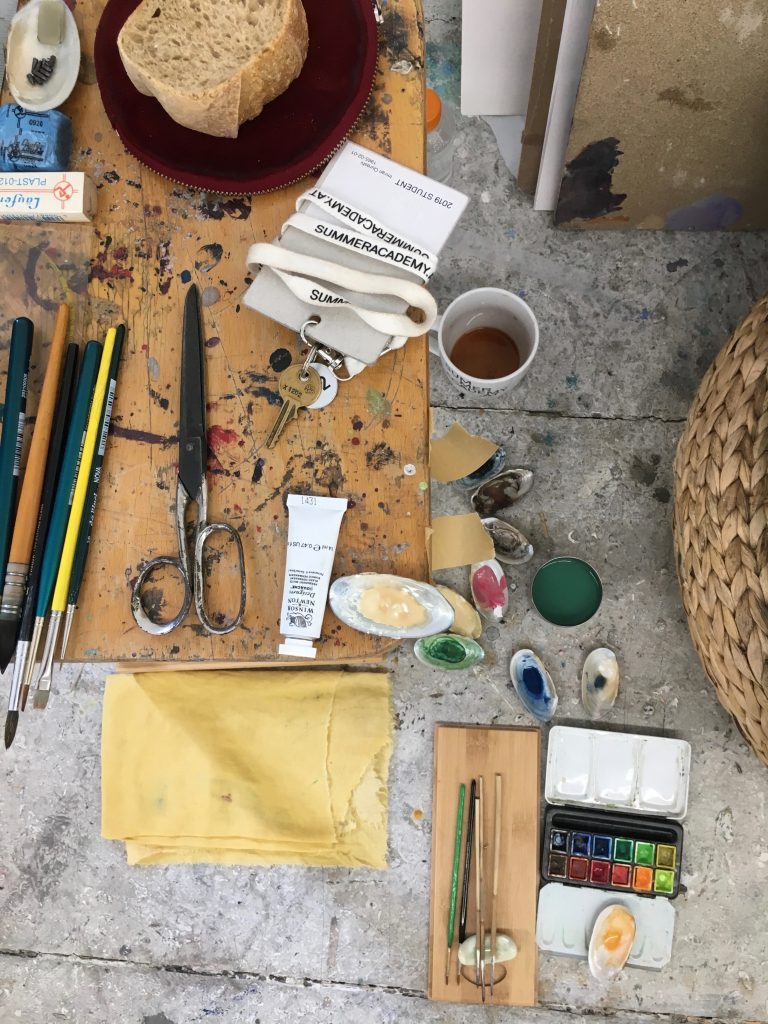
Tools of a miniature painter
- 29 August 2019
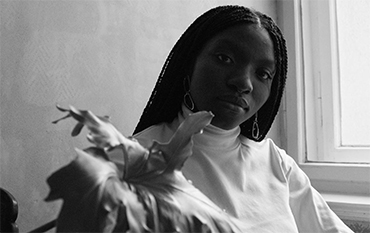
Authors
- Adelaide D' Esposito
- Albatross on the fortress
- Benedikt Breinbauer
- Chloe Stead
- Collaborative lecture performance
- Everything you always wanted to know about curating
- Gaia Tovaglia
- Hildegund Amanshauser
- Hili Perlson
- Karin Buchauer
- Montage my beautiful trouble
- Nina Prader
- Olamiju Fajemisin
- Processing our days
- Recently deleted
- Summer Academy
- Tex Rubinowitz
- Writing in on and through art
List by
Internationale
Sommerakademie
für bildende Kunst
Salzburg
T +43 662 842113
| Follow us: Newsletter TikTok YouTube |
| © 2023 / Imprint / Privacy Policy |
